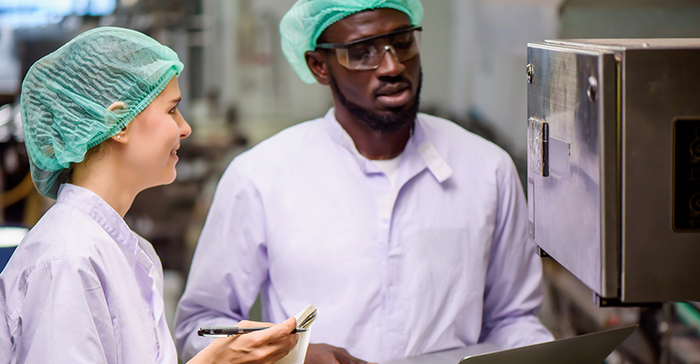Reshape Biotech has developed an imaging system that automatically quantifies microbial growth in samples at high throughput.
Its products allow lab technicians to watch microbial growth in real-time while its accompanying software creates high-quality digital versions of all microbial assays, digitising the results into colony growth curves and building a database of microbial phenotype information. One robot is used for all applications and testing can run continuously for up to 180 days.
The Copenhagen-based startup, which was incorporated in 2018, raised $1 million in a fundraising round last year via a biotech investor syndicate. It counts DSM and Chr. Hansen as customers.
Magnus Madsen, co-founder and application scientist at Reshape Biotech, said: “We are basically a bunch of engineers who started talking to university researchers, asking: 'why is all this happening manually?'. Then we started going to companies and started developing these systems for traditional microbiology assays. We are really trying to augment what people are doing by hand to give them better data, fewer costs, and a faster time-to-market.”
For food and ingredient manufacturers, Reshape Biotech’s products and services can be used to test for preservative efficacy and shelf-life, spoilage, acidification, and functional ingredient assays.
The startup, which and does its own in-house product development and manufacturing, says its products are already being used by food manufacturers, mostly in Europe and the US.
“Let's say you have a hundred different preservative candidates or a probiotic ingredient and you want to see how this inhibits the growth of mould. We can help you test out ten thousand different formulations really quickly to see which one inhibits the growth of mould for the longest time [and] when exactly it starts growing so you can compare the formulations,” Madsen said. “It could also be used for acidification: if you are doing a pH-based assay and [want to know] what is the best microbe for use to acidify this product with fermentation.
“We find that a lot of these assays are actually quite manual today. This allows you to do that automatically and in a quantified way so that you get real data instead of subjective [conclusions] such as 'it seemed to grow on this day' or 'this one seems to be faster than this one.'
Reshape Biotech works with R&D and product development labs, selling the combined hardware and analysis package on a subscription basis. Companies can either purchase one unit or several large screening platforms known as “racks”. These racks are ideal for brands that have many different formulations and want to gather a large amount of data to analyse which formulation is the best, Madsen said.
In the agri-space, applications include fungicide and insecticide development, seed germination assays, plant growth and phenotyping. For enzymes and biologicals, the robots can be used for microbial discovery, media optimisation, and strain banking.
Automated media plate filling
The startup also offers an automated media plate filler that is compatible with 90 mm petri dishes, omnitrays, and up to 24-well microtiter plates.
By automating this process, it reduces the amount of time lab workers have to spend on this menial task, thus alleviating repetitive strain and increasing lab workers’ precision and reliability. This means more precise filling volumes, less contamination, and faster results: average plating times are reduced by more than half, it says.

Jeorgos Trihaas, principal scientist at Chr. Hansen, tried out Reshape Biotech’s robots. He explained that, while he initially had doubts, he was quickly convinced.
“We believed that it would be very difficult to accurately make small samples in [microtiter] plates, be able to reproduce many copies and keep the quality at a high level at the same time. We were also worried about the sanitation protocols and the cleaning process especially when working with food analogues as they have their own natural flora following.
“But we were proven wrong. We had the opportunity of testing a prototype and we realised how quickly we could produce 24 well format microplates for custom media and food analogues. Plates were manufactured with great speed and presented a nice surface for spotting. Cleaning processes were tested and plates were incubated for cross and carry-over contaminations with no issues. The plates produced with the Media Plate Filler were of the highest quality.”






